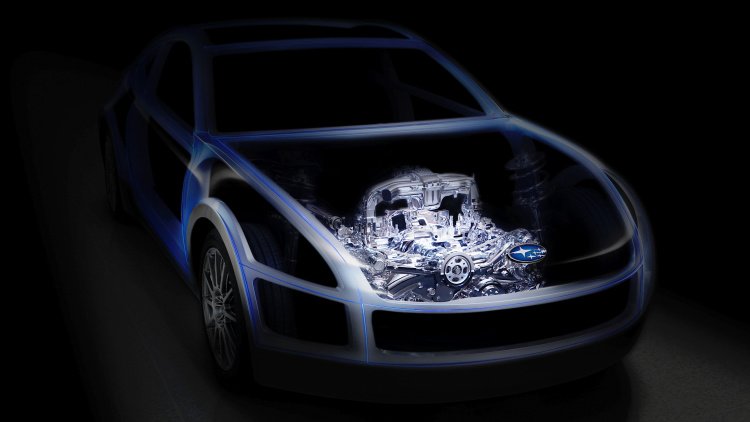Subaru Impreza WRX STI

For countless enthusiasts, boy racers, and rally fans around the world, the name Subaru is synonymous with the WRX, and its amped-up counterpart, the STI. The all-wheel-drive hot hatches and sedans owe their existence to the three World Rally Championships that Subaru won with various versions of the Impreza between 1995 and 2003. Like its rival Mitsubishi with the Lancer Evo, Subaru translated its victories on the rally stage into the road-going WRX. The first version was based on the first-generation Impreza, which never officially arrived Stateside in any form more potent than the 2.5RS. Americans didn't get the full-on WRX until the second generation. All of them have been powered by boxer engines.
Subaru BRZ

Subaru SVX

If there are two things for which Subarus are known, they're surely all-wheel drive and the boxer engine. In fact the Japanese automaker has made some 15 million vehicles with AWD by now, but even more – over 16 million – with its signature horizontally opposed engines.
Relatively obscure, the boxer or “flat” engine is essentially the same as a V setup, but with 180 degrees between the two cylinder banks. It sits lower in the engine bay and offers a lower center of gravity to the benefit of the vehicle's handling, and Subaru says the design makes its cars safer. True boxers with opposing cylinders oscillating in unison don't require balancing shafts, either. But they can be noisier and less refined, especially with fewer than six cylinders.
Karl Benz (of Mercedes fame) patented the design in 1896, and several automakers have employed it over the decades since. Alfa Romeo, Lancia, Citroën, Chevy, Ford, and Volkswagen have all used boxer engines. So did Tatra, Tucker, and Panhard. Ferrari used a flat-twelve in its Berlinetta Boxer and Testarossa lines as well. But few have embraced the design quite as emphatically as Porsche and Subaru.
Like Porsche, Subaru employs both four- and six-cylinder boxers, and has for many years. Subaru's first boxer-powered car was the 1000, which hit the scene on May 14, 1966. Which means Subaru has been producing its boxer engines for 50 years, and by now every model it makes (save for some obscure JDM kei cars) features that signature design. So to mark the occasion, we've gone back through the archives to revisit our favorite boxer-powered models in the company's history.
Subaru Forester

Where other automakers have gone big with their debut crossovers, Subaru started decidedly small with the launch of the Forester – and we applaud them for it. The original that arrived in '97 was delightfully boxy and refreshingly low-slung, standing just a couple of inches taller than today's Crosstrek. Four generations later, its successor has grown a bit in every dimension, but it's still a nimble machine – and crucially, it's still powered by an array of boxer fours.
Subaru Outback

Before Volvo was doing the Cross Country thing and long before the Audi Allroad, Subaru (sorry, AMC) virtually pioneered the idea of the ruggedized wagon with the Outback. First hitting the market in the mid-1990s, the Outback was (and still is) based closely on the Legacy, but stands apart with a higher ride height and contrasting lower body cladding to bridge the gap between wagon and crossover. It also shares the Legacy's mechanical components, including its all-wheel-drive system and choice of four- and six-cylinder boxer engines. The first version offered only 135 horsepower from 2.2 liters, but the latest nearly doubles that output figure at 256 hp from a 3.6-liter flat-six.
For a time, Subaru offered an Outback Sport as well based on the Impreza – also powered by (you guessed it) a boxer engine – but that model has now been effectively replaced by the Crosstrek.
Related News



